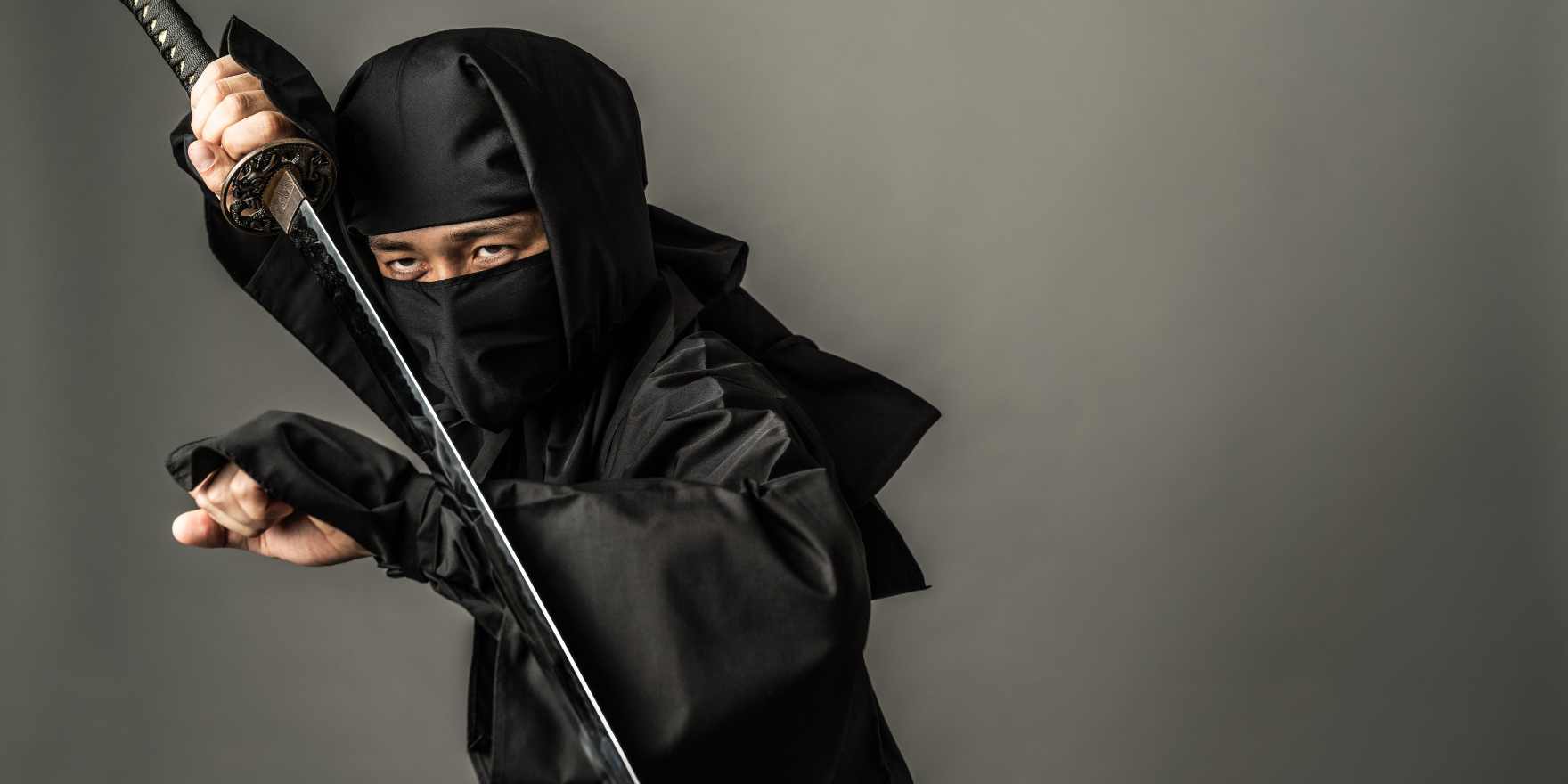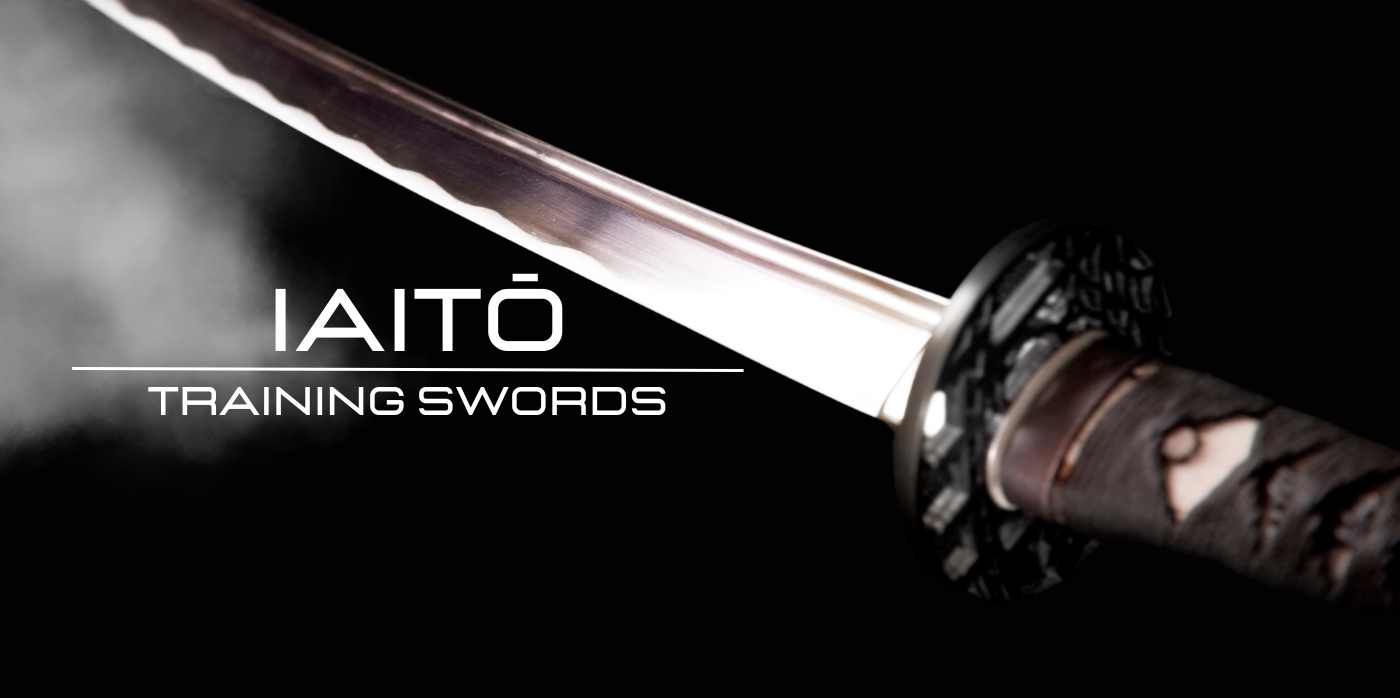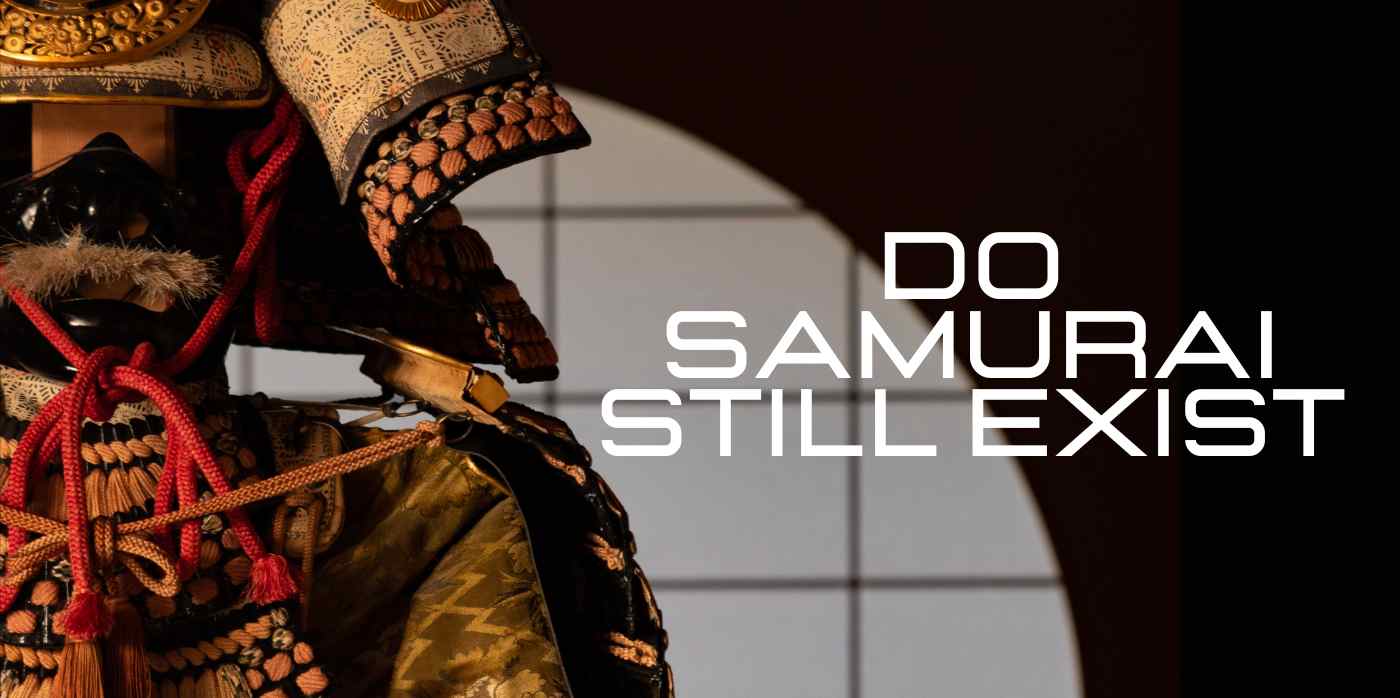The mystique surrounding famous ninjas has captivated audiences for centuries. These mysterious personalities from Japan's past have captured imaginations through a rich tapestry of tales, folklore, and historical accounts. Ranging from actual historical icons like Fujibayashi Nagato and Hattori Hanzo to more legendary figures such as Ishikawa Goemon, these celebrated ninjas have left an indelible mark on Japanese martial arts and cultural heritage. In this blog, we'll delve into the fascinating lives and myths surrounding these extraordinary individuals.
Famous Real-Life Ninjas
Fujibayashi Yasutake
Fujibayashi Yasutake is most notably the author of the "Bansenshukai," a comprehensive manual on the art of ninjutsu for ninjas and shinobi. The Bansenshukai was written in 1676 during the Edo period of Japan, a time when the samurai class was becoming more bureaucratic and the demand for covert operatives like ninjas was waning. The text can be seen as an effort to preserve the knowledge and techniques of ninjutsu for future generations.
The Bansenshukai is one of the three most significant texts on the traditional art of the ninja, along with the "Shoninki" and the "Ninpiden." This foundational text explores a wide range of subjects related to the art, techniques, and core principles of ninjutsu. It provides valuable perspectives on topics like clandestine missions, tactical planning, and the craft of subterfuge and illusion, among others.
Originating from Iga, a region synonymous with the ninja tradition along with Koga, Fujibayashi Yasutake is the enigmatic author behind the Bansenshukai. As a result of his roots, the manual is often attributed to the Iga school of ninjutsu. Specifics about Yasutake's life are sparse, and most of what is known about him stems from the legacy of his influential writings.
For both scholars and martial artists keen on understanding the historic practices and methodologies of ninjutsu, the Bansenshukai remains a crucial resource. Minimal information exists about the author's personal life, and much of our understanding of him stems from the legacy of his writings.
The manuscript remains an essential reference for scholars and martial arts enthusiasts alike who are interested in exploring the roots and tactics of ninjutsu. Its value extends beyond mere historical interest, offering a treasure trove of tactical insights and techniques that are relevant even outside of their traditional martial setting.

Momochi Sandayu
Momochi Sandayu stands as a somewhat enigmatic personality in the annals of Japanese ninjutsu, with much of his life veiled in folklore and uncertainty. Often cited as a pivotal leader of the Iga ninja clan during Japan's tumultuous Sengoku era, which spanned from the late 15th to the late 16th century, his reputation is significant. He is frequently characterized as the patriarch of the Momochi family, one of the three major ninja households in Iga, alongside the Hattori and Fujibayashi clans.
Stories suggest that Momochi Sandayu was not just a skilled ninja but also a shrewd strategist and a master of disguise. He supposedly lived in a concealed residence, with secret rooms and traps to protect against intruders. The accounts of his abilities are often larger-than-life, including stories that he could disappear at will, a likely exaggeration of real ninja techniques of evasion and escape.
Momochi Sandayu is often credited with being a guardian of the ninja traditions of the Iga province. Some historical narratives suggest he was deeply involved in formalizing and disseminating the esoteric skills of stealth, espionage, and irregular warfare. Yet, much about Sandayu remains veiled in mystery, leaving it ambiguous how much of his story is grounded in historical truth and how much is mere legend.
Sandayu is additionally noted for his resistance against Oda Nobunaga, the influential daimyo who aspired to consolidate Japan under his dominion. When Nobunaga launched a campaign to suppress the Iga province, Momochi Sandayu and other Iga leaders reportedly organized the defense. However, the outcome was tragic for the Iga ninja; they were outnumbered and defeated.
Hattori Hanzo
Born in 1542 during Japan's tumultuous Sengoku period—a time marked by societal chaos, political machinations, and relentless warfare—Hattori Hanzō was a renowned samurai and ninja. He devotedly served Tokugawa Ieyasu, the seminal leader who eventually brought unity to Japan and founded the long-lasting Tokugawa shogunate, which persisted until 1868.
To differentiate him from another warrior named Hanzō, he acquired the nickname "Oni no Hanzō," or "Demon Hanzō." This alias acknowledged his exceptional skills in strategy and his expertise in guerrilla warfare techniques.
Hanzō played a crucial role in safeguarding Tokugawa Ieyasu, especially during critical moments such as Ieyasu's retreat to Mikawa following the death of his first lord, Imagawa Yoshimoto. It was Hattori Hanzō and his men who served as both guides and bodyguards, allowing Ieyasu to return to his home province unscathed—a pivotal event in the subsequent founding of the Tokugawa shogunate.
While Hanzō's battlefield prowess was legendary, he was also well-versed in espionage and other skills typically associated with ninjas. His expertise in these areas is often attributed to his upbringing in Iga Province, a region renowned for its ninja clans. Though often depicted as a ninja in folklore and popular culture, it's important to clarify that Hanzō was fundamentally a samurai who utilized ninja techniques when necessary.
He was responsible for the construction of Hanzō's Gate, one of the gates leading to Edo Castle, a fitting tribute to his services. Hattori Hanzō died in 1596, but his legacy has lived on. He is a popular subject of Japanese folklore, literature, and cinema, often appearing as the archetypal powerful and loyal ninja.
Mochizuki Chiyome
Mochizuki Chiyome remains a somewhat elusive character in the tapestry of Japanese history, her life often veiled in myth and legend. She is believed to have existed during the turbulent Sengoku era, a period marked by widespread social upheaval and military strife in Japan. She is chiefly celebrated for purportedly founding a cadre of female ninjas, or "kunoichi."
Based on widely accepted legends, Chiyome was married to Mochizuki Moritoki, an esteemed samurai belonging to the Mochizuki clan. Following his fatal engagement in combat, she became a protegée of Takeda Shingen, the powerful daimyo who was also the overlord of her late husband. Takeda Shingen is said to have commissioned her to develop a female espionage network capable of serving as spies, couriers, and assassins.
To assemble this specialized force, Chiyome is said to have selected young women who were orphaned or otherwise displaced by the incessant conflicts of the era. She is credited with providing them with exhaustive training in both martial arts and the covert arts, such as espionage, impersonation, and seduction. These kunoichi were tasked with penetrating enemy strongholds, collecting vital intelligence, and executing other duties necessitating their singular abilities.

Jinichi Kawakami
Jinichi Kawakami is a contemporary figure frequently dubbed as the "last ninja" or the "last Koga ninja." Born in 1949, he represents the 21st generation of the Ban clan, a ninja lineage with roots extending over half a millennium. Unlike his historical counterparts from the Sengoku or Edo periods, Kawakami's life and deeds are well-recorded, making him a recognized figure in modern Japan.
Kawakami has been instrumental in maintaining the Koka Ninja Museum in Shiga Prefecture and has participated in diverse educational initiatives, documentaries, and interviews where he delves into the historical methodologies, equipment, and tenets of ninjutsu. His expertise has been showcased and discussed both domestically and internationally.
In a surprising twist, Kawakami has announced he will not designate a successor as the 22nd leader of the Ban clan, implying that the traditional line might conclude with him. He contends that the ancient arts and techniques of ninjutsu have become obsolete in today's world and should not perpetuate in their historical form.
Katō Danzō
Katō Danzō is another intriguing figure in Japanese history, often described as a legendary ninja, magician, and spy. It's believed that he existed in the tumultuous Sengoku period, a time marked by relentless military strife across Japan. While some stories attribute him with mystical powers like the ability to fly and shape-shift, these claims are probably more rooted in folklore than historical fact.
Historically, Katō Danzō is known to have been involved in espionage and intelligence activities. He was reportedly skilled in "kite flying," which was said to be a way to infiltrate or escape from enemy castles. Some stories even claim that he could "fly" over walls or moats using a large kite, but these accounts are often considered to be exaggerated or symbolic.
He is often portrayed as a master of disguise, using these skills to infiltrate enemy lines or carry out assassinations. Katō Danzō was employed by various daimyos (feudal lords) for his abilities, but his allegiances are often depicted as shifting and elusive, much like the character himself.
Unfortunately for him, his activities eventually led to his downfall. Suspicion arose around his loyalty, and he was caught and executed. Accounts differ on who exactly caught him and how he was killed, but it's generally agreed that he met a violent end.
Tateoka Doshun
Tateoka Doshun is a lesser-known figure in the lore of Japanese ninjas and martial arts, and there is limited historical information about him. What is known, however, suggests that he was a retainer of Sanada Yukimura, a famed samurai warrior of the Sengoku period. Tateoka Doshun is frequently depicted as a shinobi, believed to have been actively involved in multiple covert operations and espionage missions.
The Sengoku period was a volatile chapter in Japanese history, characterized by unending conflicts and societal upheaval. In this era, ninjas played versatile roles that encompassed espionage, clandestine sabotage, and selective assassinations. Tateoka Doshun would have lived in this complex and dangerous environment, where his skills in subterfuge and combat would have been highly valued.
As with many historical figures from this era, especially those involved in clandestine activities like ninjutsu, separating fact from fiction is challenging. The accounts and records that do exist are often intertwined with folklore and legend, making it difficult to construct an entirely accurate historical portrait.
Famous Ninjas from Folklore
Ishikawa Goemon
Ishikawa Goemon is a legendary outlaw and folk hero in Japanese history, often compared to Robin Hood in Western folklore. Said to have existed in the late 16th century, Goemon is variously portrayed in kabuki theater and storytelling as a gallant rogue who redistributes wealth from the affluent to the needy. Yet, the historical veracity of these narratives remains a subject of scholarly dispute, leaving the image of Goemon as an amalgamation of both myth and reality.
As per traditional accounts, Goemon was initially either a samurai or a ninja who, owing to some form of disgrace or orphaning, veered into a criminal lifestyle. He is most renowned for his audacious, albeit unsuccessful, plot to take the life of Toyotomi Hideyoshi, a formidable daimyo who ultimately succeeded in consolidating Japan under his rule. The assassination attempt is said to have failed when Goemon was caught after a magical incense burner revealed his presence. As punishment, he was boiled alive along with his young son in a large iron cauldron. This dramatic form of execution is depicted in many artistic works, and "Goemon-buro" (Goemon baths) are named after him.
Fuma Kotaro
Fuma Kotaro is an iconic figure in the lore of Japanese ninja history, often depicted as an expert in disguise, intelligence gathering, and guerrilla tactics. He is best known for his association with the Hojo clan, a dominant family during Japan's Sengoku period (1467–1615), an era marked by social chaos, political maneuverings, and incessant warfare. As the chieftain of the Fuma clan, Kotaro led a group of ninja and outlaws skilled in unorthodox strategies, including naval assaults and subterfuge.
While historical documentation is scant, Kotaro is frequently attributed with executing covert operations that severely hampered the Hojo clan's adversaries. Such clandestine activities might have encompassed piracy, setting fires, and orchestrating ambushes. He is notably celebrated for his alleged role in the Battle of Sekigahara, where he is said to have orchestrated a bold attack on the western army's supply chain, aiding the eastern army's ultimate triumph.
Portrayed often as a towering, formidable individual with an intimidating demeanor, Fuma Kotaro was reputed to be exceptionally proficient in unarmed combat and adept in wielding a myriad of weapons such as the most famous ninja weapons. As with many legendary ninja figures, the narrative surrounding Kotaro blends myth and reality, complicating efforts to distinguish historical facts from embellishments.
Kirigakure Saizo
Kirigakure Saizo is a legendary figure in Japanese folklore and is one of the Ten Braves of Sanada, a group of ninja who served under the Sengoku period daimyo Sanada Yukimura. Kirigakure Saizo is often characterized as a highly skilled ninja, master of the Iga style of ninjutsu, and a capable swordsman. His name "Kirigakure" means "hidden in mist," emphasizing his skills in stealth and infiltration.
Much like other famous ninja, Saizo is more a figure of legend than a historical person.
Sandayu Momochi
Sandayu Momochi is a name frequently mentioned in the history and myths surrounding Japanese ninjutsu. Renowned as a master ninja, he is closely linked with the Iga area in Japan, a region that—alongside the Koga region—is famous for its ninjutsu heritage.Historical accounts and records about Momochi Sandayu are scarce and often mix facts with myths, as is the case with many figures associated with ninjutsu.
Momochi is believed to have existed in the tumultuous era of the Sengoku period, characterized by societal disorder and ongoing battles between rival daimyos. He is frequently attributed with honing the skills of ninjutsu and transmitting these refined techniques to successive waves of ninja practitioners. Alongside the Fujibayashi and Hattori clans, the Momochi family held a position as one of the three leading ninja lineages in the Iga province.
Some accounts suggest that Momochi led a double life as both a farmer and a ninja, effectively using his civilian identity to gather intelligence. This dual lifestyle is cited as an example of the cunning and strategic thinking that ninjas are famous for.






